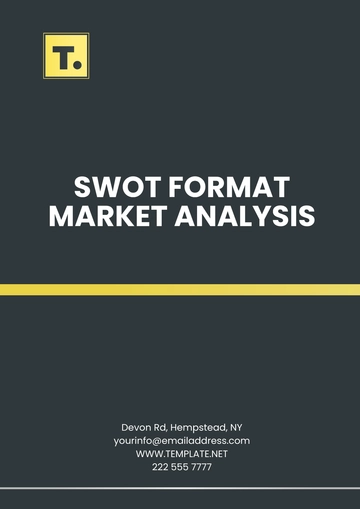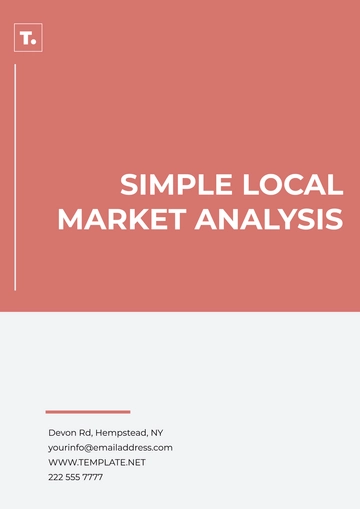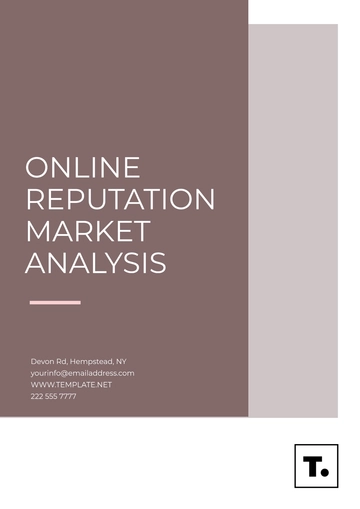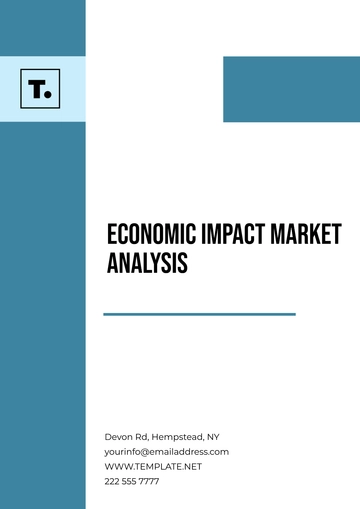Free Real Estate Market Analysis
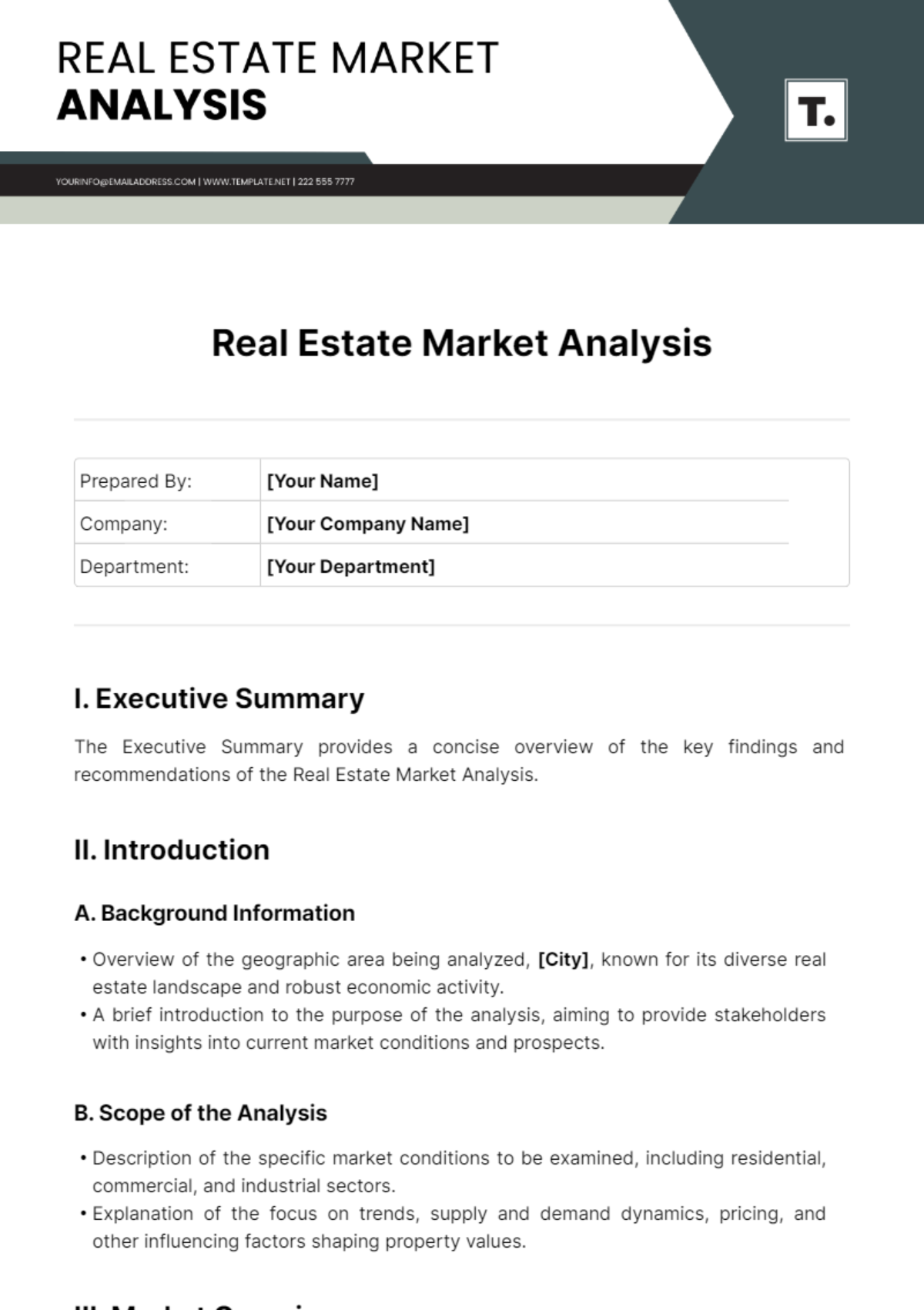
Prepared By: | [Your Name] |
Company: | [Your Company Name] |
Department: | [Your Department] |
I. Executive Summary
The Executive Summary provides a concise overview of the key findings and recommendations of the Real Estate Market Analysis.
II. Introduction
A. Background Information
Overview of the geographic area being analyzed, [City], known for its diverse real estate landscape and robust economic activity.
A brief introduction to the purpose of the analysis, aiming to provide stakeholders with insights into current market conditions and prospects.
B. Scope of the Analysis
Description of the specific market conditions to be examined, including residential, commercial, and industrial sectors.
Explanation of the focus on trends, supply and demand dynamics, pricing, and other influencing factors shaping property values.
III. Market Overview
A. Macro-Economic Factors
Examination of economic indicators such as GDP growth, unemployment rates, and inflation, showcasing [City]'s resilience in the face of economic fluctuations.
Analysis of how these factors impact the real estate market, highlighting correlations between economic prosperity and property demand.
B. Demographic Trends
Overview of population growth, migration patterns, and demographic shifts, illustrating [City]'s attractiveness to both domestic and international migrants.
Discussion of how demographic changes affect property demand and values, emphasizing the importance of understanding shifting consumer preferences.
IV. Property Inventory
A. Residential Properties
Breakdown of available residential properties by type (e.g., single-family homes, condominiums), indicating a surge in luxury apartment developments in downtown [City].
Analysis of inventory levels and trends in the residential market, noting a slight decrease in inventory due to high demand and limited new construction.
B. Commercial Properties
Overview of commercial real estate inventory, including office, retail, and industrial spaces, illustrating vacancy rates and lease rates across different submarkets.
Submarket | Vacancy Rate (%) | Lease Rate ($/sq ft) |
|---|---|---|
Downtown | 8.5 | $45 |
Business Park | 12.3 | $30 |
Industrial Zone | 5.8 | $8 |
Discussion of vacancy rates and leasing trends in the commercial sector, highlighting growing demand for flexible office spaces and mixed-use developments.
C. Industrial Properties
Examination of industrial property inventory, including warehouses and manufacturing facilities, showcasing [City]'s role as a logistics hub.
Analysis of demand drivers and supply dynamics in the industrial market, emphasizing the impact of e-commerce growth on warehouse demand.
V. Demand Analysis
A. Factors Driving Demand
Identification of factors such as population growth, job creation, and urbanization, underlining [City]'s attractiveness for businesses and residents alike.
Discussion of how these factors influence property demand, indicating a correlation between job growth in tech sectors and demand for upscale housing.
B. Buyer Preferences
Analysis of buyer preferences and trends in property features and amenities, outlining the most sought-after amenities in residential properties.
Amenity | Percentage of Buyers (%) |
|---|---|
Swimming Pool | 68 |
Gym/Fitness | 52 |
Green Spaces | 49 |
High-Speed Internet | 85 |
Overview of the most desirable neighborhoods and property types, highlighting areas experiencing gentrification and revitalization efforts.
VI. Supply Analysis
A. New Construction
Assessment of new construction projects in the market, detailing upcoming residential and commercial developments.
Project Name | Property Type | Location | Expected Completion |
|---|---|---|---|
Skyview Residences | Condominiums | Downtown | Q3 2054 |
Innovation Center | Office Space | Tech District | Q2 2055 |
Logistics Park | Warehouses | Industrial Zone | Q4 2053 |
Discussion of how new supply impacts overall market dynamics, noting potential oversupply risks in certain submarkets.
B. Vacancy Rates
Examination of vacancy rates across different property sectors, comparing vacancy rates between office, retail, and industrial properties.
Property Type | Vacancy Rate (%) |
|---|---|
Office | 10.2 |
Retail | 7.9 |
Industrial | 4.5 |
Analysis of trends in vacancies and their impact on pricing and market equilibrium, emphasizing the need for adaptive reuse strategies in response to changing demand patterns.
VII. Pricing Trends
A. Historical Pricing Data
Overview of historical property price trends, showcasing illustrating median sales prices over the past five years.
Year | Median Sales Price ($) |
|---|---|
2050 | $350,000 |
2051 | $375,000 |
2052 | $390,000 |
2053 | $410,000 |
2054 | $430,000 |
Analysis of appreciation rates and price volatility over time, highlighting neighborhoods experiencing rapid appreciation and potential market bubbles.
B. Market Comparisons
Comparison of property prices in the analyzed market to neighboring areas or similar markets, presenting price differentials between [City] and surrounding suburbs.
Suburb | Median Sales Price ($) | Price Differential ($) |
|---|---|---|
City X | $430,000 | - |
Suburb A | $380,000 | -$50,000 |
Suburb B | $410,000 | -$20,000 |
Discussion of how pricing compares and implications for investors and buyers, providing insights into investment arbitrage opportunities.
VIII. Market Outlook
A. Future Projections
Forecast of market trends and conditions over the medium to long term, considering factors such as population growth projections and anticipated infrastructure developments.
Discussion of potential risks and opportunities for investors and developers, including regulatory changes and geopolitical uncertainties.
B. Recommendations
Actionable recommendations based on the analysis findings, including diversification strategies for investors and adaptive reuse options for developers.
Suggestions for stakeholders to capitalize on market opportunities and mitigate risks, such as conducting thorough due diligence and staying informed of market developments.
- 100% Customizable, free editor
- Access 1 Million+ Templates, photo’s & graphics
- Download or share as a template
- Click and replace photos, graphics, text, backgrounds
- Resize, crop, AI write & more
- Access advanced editor
Introducing the Real Estate Market Analysis Template, meticulously crafted by Template.net for in-depth property market evaluation. This customizable spreadsheet empowers real estate professionals and investors to analyze market trends, property values, and investment opportunities. With editable features and user-friendly design, it offers flexibility in assessing various aspects of the real estate market. Streamline your analysis process and gain valuable insights into housing demand, pricing dynamics, and market competition. Elevate your real estate strategy with this versatile template, your essential tool for making informed decisions and maximizing investment returns.



